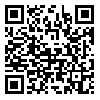2- Department of Environment, Faculty of Natural Resources, University of Zabol, Zabol, Sistan va Blaoochestan, Iran , mohsen.shahariari@uoz.ac.ir
Background and Objectives: Organophosphate pesticides are used most commonly for domestic, commercial, and agricultural purposes and have been found to be highly toxic. In essence, bioremediation has become one of the most important tools for removing these compounds in the environment, considering its higher efficiency when compared with the physicochemical methods.
Materials and Methods: The biodegradation efficiency of two bacterial strains (i.e. Serratia marcescens BNA1 and Pseudomonas aeruginosa BNA2) were assessed. In order to evaluate Malathion biodegradation, each sample was cultured on mineral salts medium containing Malathion as a sole carbon source. Malathion biodegradation efficiency of the strains was monitored in different culture media. The ability of bacterial isolates to degrade Malathion was studied using gas chromatography.
Results: Serratia marcescens BNA1 and Pseudomonas aeruginosa BNA2 were able to degrade Malathion. Biodegradation percentage in different treatments recorded were: BNA1+Ma (33.88%), BNA2+MA (26.45%), BNA1+BNA2+Ma (46/96%), BNA1+Ma+Tween (61.05%), BNA2+Ma+Tween (40.17%), and BNA1+BNA2+Ma+ Tween (67.79%).
Conclusion: It could be speculated that the best degradation efficiency can be yielded using mixture of strains plus a surfactant. The results of this study can be used in the bioremediation of Malathion contaminate soil after doing the pilot experiments.
Received: 2015/08/10 | Accepted: 2016/01/11 | Published: 2016/03/2
| Rights and Permissions | |
 |
This work is licensed under a Creative Commons Attribution-NonCommercial 4.0 International License. |


